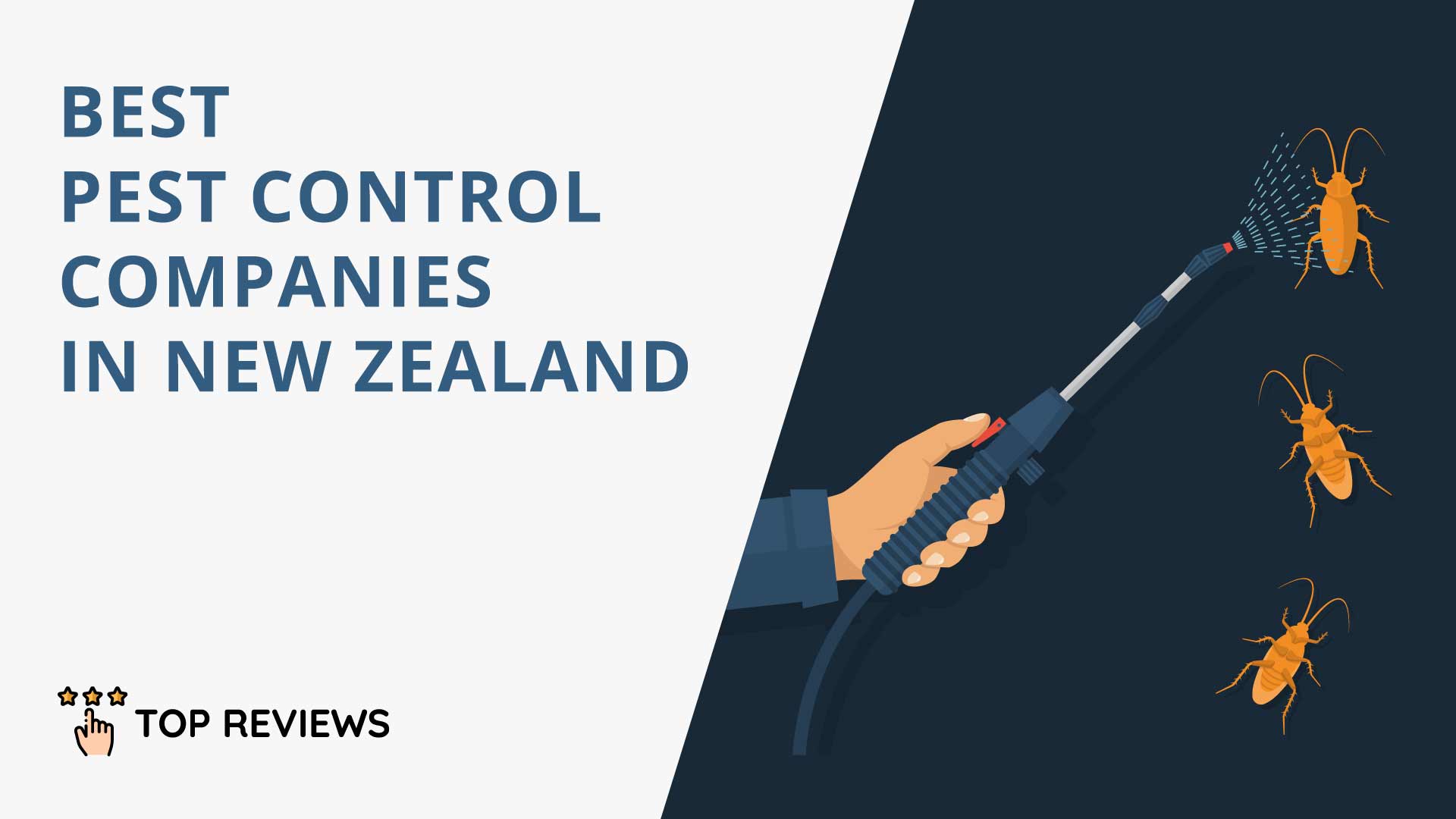The 8 Best New Zealand Pest Control Companies
- Elite Pest Control
- Highlights
- Customer Reviews
- Aces Pest Control
- Highlights
- Customer Reviews
- Rentokil
- Highlights
- Positive Pest Control
- Highlights
- Customer Reviews
- Wellington Pest Management Ltd
- Highlights
- Customer Reviews
- Bug King
- Highlights
- Customer Reviews
- A+ Services NZ
- Highlights
- Property Services Unlimited
- Highlights
- Customer Reviews
If no amount of cleaning can make those pests go away, there’s something wrong. The answer is calling on the best New Zealand pest control companies so that the problem will not get bigger.
Ants scurry up and down the wall, flies attempt to land on your pasta, or wasps come in from the window in search of food . . . Taking them on by yourself seems to only be a temporary win.
It will take an expert to completely banish them from your home or business. It will take someone who knows how they behave and where they hide as well as how to eradicate the entire swarm.
Therefore it’s important that you find a pest removal team with experience, PMANZ licence, warranty, and modern equipment. That will assure that you will get a fantastic and safe service.
Are you ready to get these pests out of your house? Then let’s now round up the best New Zealand pest control companies!
1. Elite Pest Control
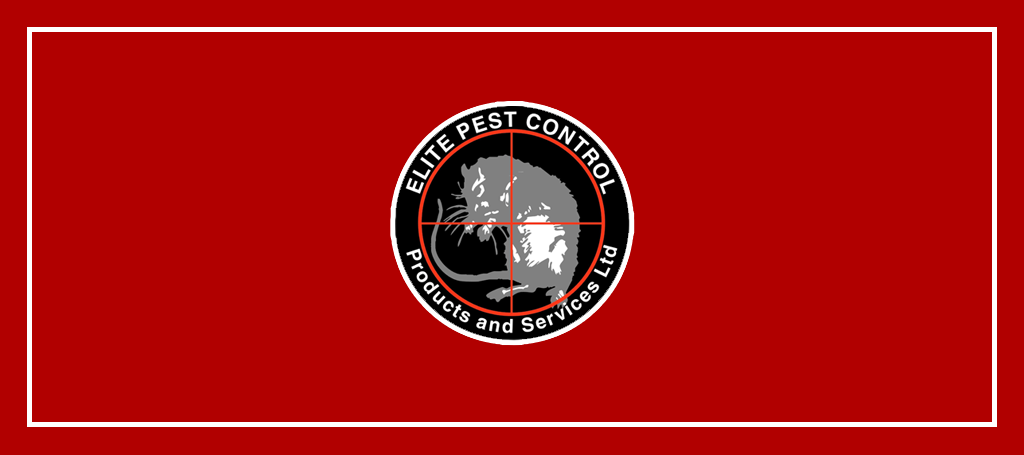
| Areas covered | Christchurch and Canterbury Region |
| Services | Pest Management |
| Address | 27 Cashmere Road, Cashmere, Christchurch 8022, New Zealand |
| Contact no | 03 332 1962 or 021 911 558 |
| Website | https://elitepestcontrol.co.nz/ |
If you are looking for an exceptional service, here it is with Elite Pest Control. Its team are all PMANZ-certified and are also prompt and efficient, delivering unsurpassable results!
They use a patented non-toxic treatment that involves Diatomaceous Earth. This is very safe and harmless for family, little ones, and pets at home.
Whether it’s a wood borer, spider, fleas, or silverfish, the team can effectively remove them and cancel their food chain. With this, you get a 3-month warranty period.
However, just in case the harmful insects return, the technicians would be more than happy to come back and fix it for you.
Highlights
- Applies safe and harmless pest treatment
- PMANZ certified team
- Gives you a 3-month service warranty
Customer Reviews
One customer, Frances Pain wrote on Google Business:
“We had a great experience with this company! I rang up on Wednesday and explained that we were having problems with fleas, spiders, a bird’s nest in the roof, and mice in the walls. They were able to send someone the very next day, who has effectively dealt with all of these issues. Very impressed with their quick turnaround! There was almost no smell when we arrived back at the house, we just aired the house briefly and everything was back to normal. Thank you to elite pest control for giving us peace of mind!”
2. Aces Pest Control
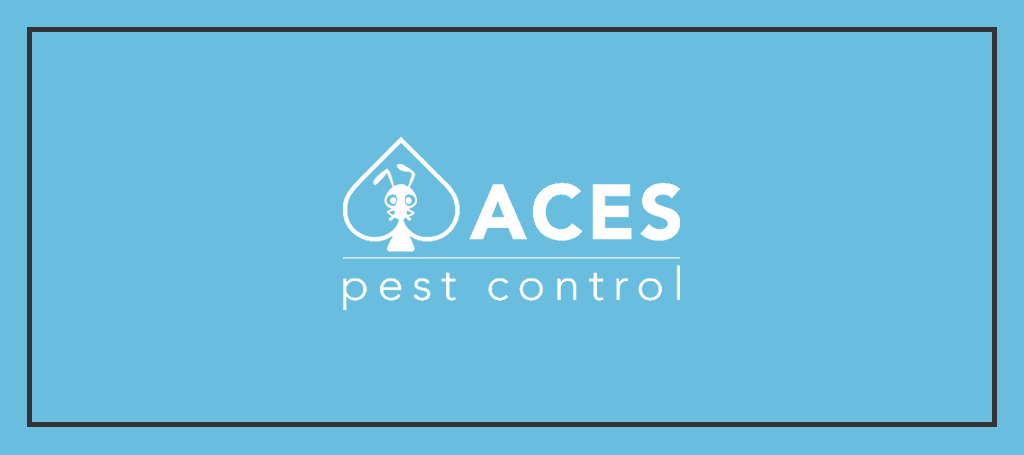
| Areas covered | Auckland wide |
| Services | Residential, Commercial, and Industrial Pest Control |
| Address | 17 Rawene Road, Birkenhead, North Shore, Auckland, New Zealand |
| Contact no | 027 6936 007 |
| Website | https://commercialpestcontrol.net.nz/ |
There’s no pest or place that cannot be treated by Aces Pest Control. Aces Pest Control is a locally owned and operated company that services clients throughout Auckland.
From homes and cafes to offices and schools through to factories and warehouses, they impart the same quality, expertise, and knowledge to free clients from many kinds of pests.
Only the lowest-toxicity pesticides are used, which is safer for children, pets, and the planet. They use industry-tested brands like FMC, Bayer, Basf, and Syngenta.
In order to go above the customer’s expectation, they first inspect the house and identify the problematic pest. From there, they tailor their pest control service to the best solution for you.
Highlights
- Uses only low-toxic pesticides
- Locally owned and operated
- Personalised service
Customer Reviews
Cristina Casares, one customer shared on Google Business:
“Absolutely outstanding work! Very effective in just a couple of days I had no more mice in the house… Super friendly and professional person! I would highly recommend ACES to anyone that needs pest control. ;)”
3. Rentokil

| Areas covered | New Zealand wide |
| Services | Residential and Commercial Pest Control |
| Address | North or South Island, New Zealand |
| Contact no | 0800 552 001 or 0800 552 004 |
| Website | https://www.rentokil.com/nz/ |
With branches across the North and the South Island, Rentokil has been making homes healthier and safer since 1965. It is one of best New Zealand Pest Control Companies.
It offers safe and effective pest control services in both businesses and homes. They help you comply with legislation and audit requirements as well as say bye-bye to pests and their nests.
Treatment is conducted by registered and fully qualified controllers. They keep up with the latest pest equipment and research to stay one step ahead in the industry.
Lastly, they never forget about the environment. With the team’s participation, they reduce their carbon footprint for Mother Earth as much as possible.
Highlights
- Safe and effective pest control
- Fully qualified pest control specialists
- Eco-friendly practice
4. Positive Pest Control

| Areas covered | Rotorua wide |
| Services | Residential and Commercial Pest Control |
| Address | Western Heights, Rotorua 3015, New Zealand |
| Contact no | 027 896 8661 |
| Website | http://www.positivepestcontrol.co.nz/ |
If you think you need a custom programme to destroy the pests at home, Positive Pest Control is the one to call! It is based in Rotorua and has a talented and highly trained team.
You can avail of their quarterly pest control service, which is their specialty. Alternatively, you can opt for one-off, semi-annual, or annual packages — keeping pests away at every turn.
Since it’s small and family-owned, you will feel that your needs are given the care and attention they deserve.
And the prices are reasonable and fair, so you get value from their service. So, this is yet another of the best New Zealand pest control companies.
Highlights
- Highly talented and professional team
- Offers one-off, bi-yearly or yearly pest treatment options
- Reasonable pricing
Customer Reviews
Hine and Norm reviewed the pest control company on Google Business:
“This morning we phoned Murry (7.30am In fact) he answered told us he be at our house at 9. Sure enough he was at our house 9, thoroughly explained how to use our traps, placed and set them. He provided a informative, Money saving n sprinkle of his own touch service?…
Thank you so much Murry and would recommend your service to everyone in a heart beat.
Norm n Hine”
5. Wellington Pest Management Ltd
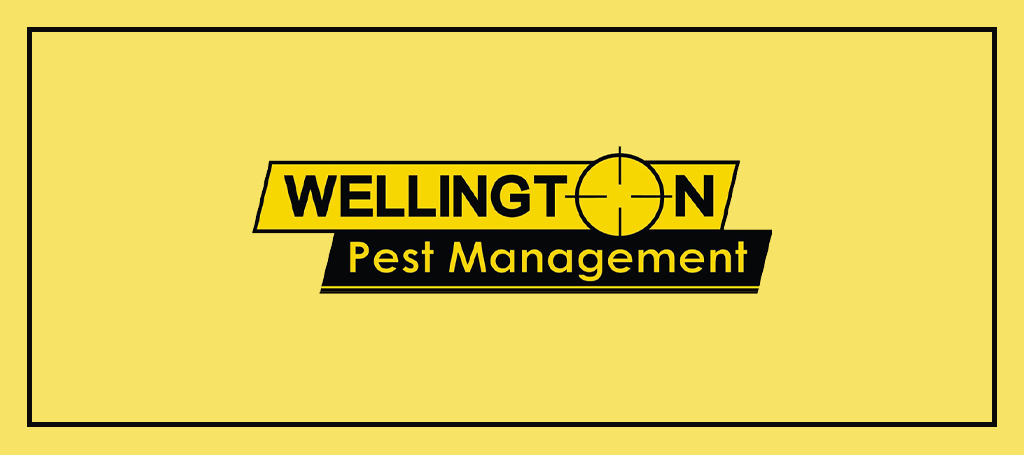
| Areas covered | Greater Wellington area |
| Services | Residential and Commercial Pest Control |
| Address | Wellington, New Zealand |
| Contact no | 0800 367 145 |
| Website | https://www.wellingtonpestmanagement.co.nz/ |
Take the firefight to the cockroach or borer infestation through Wellington Pest Management. Darren Labrum manages this company as well as serves as a PMANZ technician.
Pests are eradicated through their eco-friendly products and equipment. They use effective traps and bait stations in order to trap the notorious rodents that laid droppings on your garage.
You will also get value for your money with the team’s advice on what you should do to keep the pests from coming back. And the same goes for treatment and procedures.
While the back-end operators are friendly, attentive, and easy to talk to. Call them to get an idea of the quote or to set an appointment within the week.
Thus with these reasons, Wellington Pest Management is definitely one of the best New Zealand pest control companies!
Highlights
- Uses environment-friendly products
- PMANZ certified team
- Value for your money
Customer Reviews
One customer, Amitava Tinku Basu wrote on Google Business:
“For nearly ten years now (I think), have been getting my house externally sprayed once every year by Darren’s company … so far haven’t found any reason not to be satisfied by Wellington Pest Management company. I have found his technicians (Sammy, in the past and now Terry) who does the actual spraying to be knowledgeable, courteous and meticulous in their jobs. So far so good!!”
6. Bug King
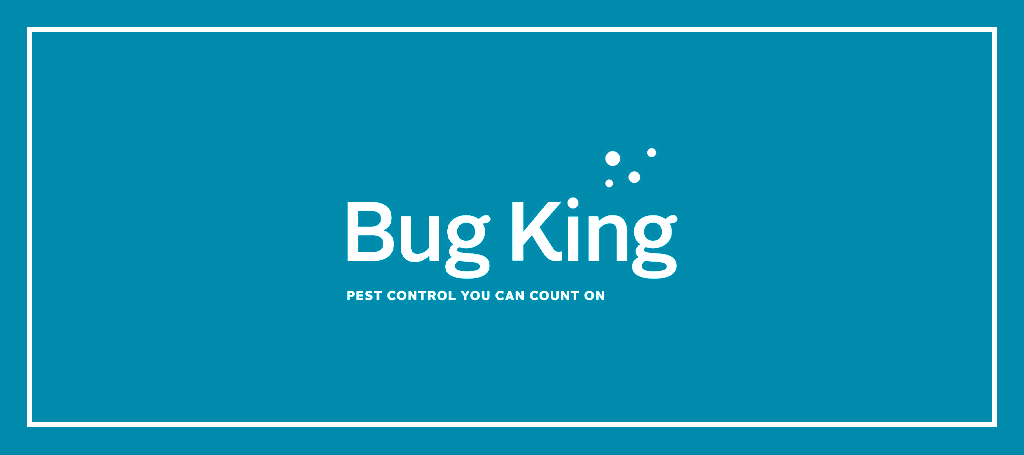
| Areas covered | Auckland-wide |
| Services | Residential and Commercial Pest Control |
| Address | N/A |
| Contact no | 0800 54 64 54 [email protected] |
| Website | https://www.bugking.co.nz/ |
Bug King is a pest control company that offers solutions for both residential and commercial properties. They are capable of handling most common pests, such as ants, bed-bugs, wasps, and more.
Unlike other companies, Bug King approaches a pest problem according to their client’s situation. This ensures that any pest issues will be resolved swiftly and easily as soon as you call it in.
When it comes to quick pest control, Bug King is one of the best. Call them now!
Highlights
- Fast, efficient, safe results
- Offers pest control tips
Customer Reviews
One customer said:
“We have used Bug King annually for the last 6 years and I wouldn’t go anywhere else. Their communication to book and coordinate the treatment is impeccable and the treatment itself is extremely effective. I really appreciate how there is no smell or residue upon entry of our property and they leave all the appropriate information as you enter the house. Would highly recommend. “
7. A+ Services NZ

| BEST FOR | Spiderproofing |
| SERVICES | Window Cleaning, Carpet Cleaning, Gutter Cleaning, Moss Spraying, Spiderproofing, Mice & Rat Treatments, Gutter Washing, House Washing, Domestic Cleaning, Meth Testing, Commercial Building Washes, Office Cleaning |
| WEBSITE | https://www.aplusservicesnz.com/ |
| ADDRESS | N/A |
| CONTACT DETAILS | [email protected] (03) 684 9266 027 714 4812 0800 155 166 |
| OPERATING HOURS | N/A |
A+ Services offers a wide variety of home and commercial cleaning treatments, from washings to gutter cleaning. No matter what you choose, they’re sure to deliver only their best.
They also offer pest control treatments, some of which include spider proofing and mice extermination. They guarantee that they’ll be able to keep your place pest-free for a long time.
If you’re interested, make sure to contact them! You’ll wish you could have done it sooner.
Highlights
- Provides residential and commercial services
- No additional costs
8. Property Services Unlimited

| SERVICES | Ant Beetle Bed bugs Cockroach Flea Possum Rat and mouse Spider Wasp Woodlice |
| WEBSITE | https://psu.co.nz/ |
| ADDRESS | 7 Sloper Avenue, Frankton, Hamilton 3204 |
| CONTACT DETAILS | +64 7-847 2737 |
| OPERATING HOURS | Monday – Friday: 8:30 AM – 5:00 PM |
Property Services Unlimited (PSU) is well-known in Hamilton and Tauranga. It even has numerous franchise locations across the country, making it one of the go-to pest control services of Kiwis.
When it comes to pest control, PSU can get rid of any type of pest, whether it be colonies of ants or a family of possums. Each team member of its pest control service team also holds a Level 3 New Zealand Certificate in Pest Operations.
PSU also takes pride in meeting NZQA standards and IICRC & RIA industry standards. Additionally, PSU also uses only EPA-approved chemicals to make surroundings pest-free yet still healthy for humans.
These certifications also allow PSU to handle commercial and industrial issues involving asbestos, moulds, meth, and even fire and flood damage.
As an all-around commercial cleaner, PSU can also clean surfaces made with fabric, glass, and PVC. PSU also makes sure to inspect each surface so that it can use the appropriate cleaning techniques specific to each material.
Highlights
- Compliant with NZQA standards
- Restoration services meet IICRC & RIA industry standards
- Use of EPA-approved chemicals
- Each team member has Level 3 certification
Customer Reviews
Clients have claimed PSU to be prompt, efficient, and professional. Here are some customer reviews that have said much of the same thing:
“Fantastic team that offers extensive cleaning services as well as restoration services. Needed water damage restoration and upholstery cleaning and they did both in a professional, yet timely fashion.”—Matt Corlis
“I had my commercial range hood cleaned. Very hard working and friendly staff. Extremely happy with completed work.”—Meg
And with that, we conclude the best New Zealand pest control companies. Don’t wait for the pest problem to get worse, but call these specialists at once to keep them under control.
Do you have any questions about the country’s top pest controllers? Feel free to send us a message and we will come back to you in a jiffy.
If you want to know more about this, but for Wellington City, we suggest you read the best Wellington pest control companies.
And for a cleaner home or workplace, try to read about the best cleaning services in Christchurch. Make it clean so that pests won’t be able to establish themselves in there.
